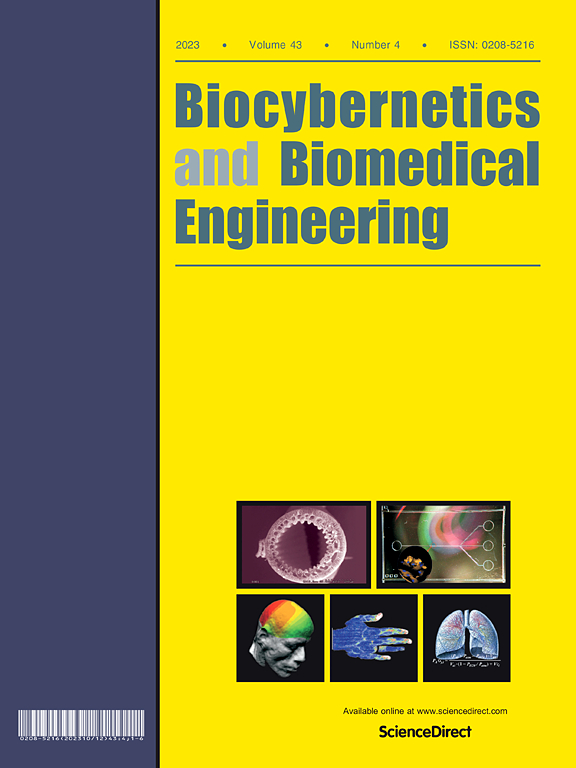综合和可解释的框架揭示阿尔茨海默病和轻度认知障碍的神经生理指纹:机器学习- shap方法
IF 6.6
2区 医学
Q1 ENGINEERING, BIOMEDICAL
引用次数: 0
摘要
阿尔茨海默病(AD)引起的痴呆和轻度认知障碍(MCI)是与脑电磁活动中断相关的神经系统疾病,通常使用脑磁图(MEG)和脑电图(EEG)进行研究。为了量化不同的大脑特性,可以从MEG和EEG中计算不同的参数族(即频谱,非线性,形态,功能连接或网络结构和组织)。然而,单独研究这些特征忽略了大脑活动的复杂性。综合框架可用于揭示复杂的神经生理指纹,以及全面表征病理条件。为此,数据融合方法至关重要,尽管它们在解释上存在挑战。在本研究中,机器学习(ML)模型被训练以区分严重程度组,而SHapley加性解释(SHAP)算法随后被用于评估输入特征与输出分类的相关性。分析了三个数据库:MEG(55名健康对照、HC、42名MCI患者和86名AD患者)、EEG1(51名HC、52名MCI和100名AD)和EEG2(45名HC、69名MCI和82名AD)。采用梯度增强方法对MEG数据库的三类分类问题得到了最好的结果:三类Cohen’s kappa系数为0.5452,准确率为72.63%。随后,在梯度增强上使用SHAP,结果表明光谱特征在所有数据库中都是高度相关的。此外,形态学测量与MEG数据库表现出高度相关性,而EEG1和EEG2数据库分别表现出功能连通性和多重组织测量,作为相关参数的子组。最后,利用SHAP选择数据库中常见的相关特征,生成AD和MCI的神经生理指纹图谱。这项研究强调了不同MEG和EEG参数在表征神经病理学方面的相关性。该框架基于脑电信号和脑电信号,可用于生成可解释的、鲁棒的、准确的AD和MCI神经生理指纹。本文章由计算机程序翻译,如有差异,请以英文原文为准。
Integrative and interpretable framework to unveil the neurophysiological fingerprint of Alzheimer’s disease and mild cognitive impairment: A machine learning-SHAP approach
Dementia and mild cognitive impairment (MCI) due to Alzheimer’s disease (AD) are neurological pathologies associated with disruptions in brain electromagnetic activity, typically studied using magnetoencephalography (MEG) and electroencephalography (EEG). To quantify diverse brain properties, different families of parameters can be computed from MEG and EEG (i.e., spectral, non-linear, morphological, functional connectivity, or network structure and organisation). However, studying these characteristics separately overlooks the complex nature of brain activity. Integrative frameworks can be useful to unveil the intricate neurophysiological fingerprint, as well as to characterise pathological conditions comprehensively. To that purpose, data fusion methodologies are crucial, despite their interpretational challenges. In this study, Machine Learning (ML) models were trained to discriminate between groups of severity, whereas the SHapley Additive eXplanations (SHAP) algorithm was afterwards utilised to assess the relevance of the input characteristics into the output classification. Three databases were analysed: MEG (55 healthy controls, HC, 42 MCI patients, and 86 AD patients), EEG1 (51 HC, 52 MCI, and 100 AD), and EEG2 (45 HC, 69 MCI, and 82 AD). The best results for the three-class classification problem were obtained by Gradient Boosting for the MEG database: 3-class Cohen’s kappa coefficient of 0.5452 and accuracy of 72.63 %. Afterwards, using SHAP on Gradient Boosting, it has been shown that spectral features were identified as highly relevant across all databases. Furthermore, morphology measures presented high relevance for the MEG database, whereas EEG1 and EEG2 databases showed functional connectivity and multiplex organisation measures, respectively, as relevant subgroups of parameters. Finally, commonly relevant features across databases were selected using SHAP to generate the neurophysiological fingerprints of AD and MCI. This study highlights the relevance of different MEG and EEG parameters in characterising neurological pathologies. The proposed framework, based on MEG and EEG, can be used to generate interpretable, robust, and accurate neurophysiological fingerprints of AD and MCI.
求助全文
通过发布文献求助,成功后即可免费获取论文全文。
去求助
来源期刊

Biocybernetics and Biomedical Engineering
ENGINEERING, BIOMEDICAL-
CiteScore
16.50
自引率
6.20%
发文量
77
审稿时长
38 days
期刊介绍:
Biocybernetics and Biomedical Engineering is a quarterly journal, founded in 1981, devoted to publishing the results of original, innovative and creative research investigations in the field of Biocybernetics and biomedical engineering, which bridges mathematical, physical, chemical and engineering methods and technology to analyse physiological processes in living organisms as well as to develop methods, devices and systems used in biology and medicine, mainly in medical diagnosis, monitoring systems and therapy. The Journal''s mission is to advance scientific discovery into new or improved standards of care, and promotion a wide-ranging exchange between science and its application to humans.
 求助内容:
求助内容: 应助结果提醒方式:
应助结果提醒方式:


